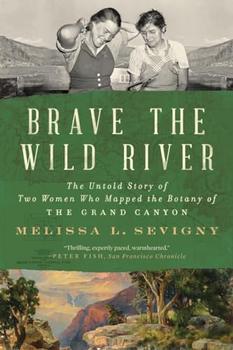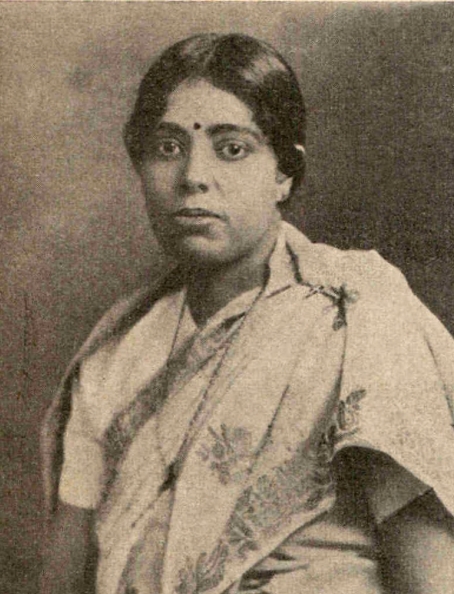Summary | Excerpt | Reviews | Beyond the Book | Read-Alikes | Genres & Themes | Author Bio

The Untold Story of Two Women Who Mapped the Botany of the Grand Canyon
by Melissa L. SevignyThis article relates to Brave the Wild River
 Throughout their careers, botanists Elzada Clover and Lois Jotter helped to break barriers for women in their field. Beyond this, they became the first people in all of Western science to officially catalogue the plant life growing within the Grand Canyon. Despite their obvious expertise, much of the press coverage of their work at the time focused on the perceived novelty that they were women. This led Clover and Jotter to fear their scientific contributions would be overlooked because of their gender.
Throughout their careers, botanists Elzada Clover and Lois Jotter helped to break barriers for women in their field. Beyond this, they became the first people in all of Western science to officially catalogue the plant life growing within the Grand Canyon. Despite their obvious expertise, much of the press coverage of their work at the time focused on the perceived novelty that they were women. This led Clover and Jotter to fear their scientific contributions would be overlooked because of their gender.
In Brave the Wild River, author Melissa L. Sevigny combats this prospect by immortalizing the botanists' journey along the Colorado River. In the same spirit of celebrating the groundbreaking contributions made by women in botany, here is a brief introduction to a few other notable historical pioneers.
Jeanne Baret (1740 – 1807)
Born to a working-class family in France, Jeanne Baret established herself as an expert in identifying herbal plants for their medicinal properties. Invited to join an expedition for her knowledge, she became the first woman on record to circumnavigate the globe circa 1775. She led many field expeditions along the way, helping to collect more than 6,000 plant specimens. Most remarkably of all, due to rules banning women from ships at the time, Baret did all of this disguised as a man; binding her chest and wearing loose fitting clothing to hide her identity from the crew.
When the truth was discovered some two years into the voyage, much of her work went uncredited. However, such was the respect she had earned among her crewmates, she was not prosecuted for breaking the French Navy's strict "no women" onboard policy. Now, she is a highly regarded name in the world of botany, with the newly discovered Solanum baretiae species named in her honor in 2012.
Elsie Wakefield (1886 – 1972)
Elsie Wakefield published around 100 papers on fungi and plant pathology throughout her impressive career. Also a talented artist, she identified, named and documented species of fungi in the UK, completing two field guides on the subject. Rising up the ranks, she became Head of Mycology (the study of fungi) at Kew Gardens in 1915, where she also served as Deputy Keeper of the Herbarium for six years. Multiple plant species are named in her honor in recognition of her achievements, with much of her illustrative work still residing in the Kew museum and archives.
Agnes Arber (1879 – 1960)
Botanist, scientific artist and historian, London-born Agnes Arber published multiple innovative research papers and self-illustrated books on botany, as well as works on the wider history and philosophy of botany. Celebrated by her peers, she became the third woman overall and the first woman botanist to be elected as a fellow of the Royal Society in 1946. For her many contributions to botanical science, she was also awarded the Gold Medal of the Linnean Society of London (the world's oldest society dedicated to natural history). This made her the first woman to receive the accolade.
Janaki Ammal (1897 – 1984)
Literacy among women in India was less than one percent in the early 20th century when Ammal rejected the prospect of an arranged marriage in pursuit of her education and career. Earning both a bachelor's degree and an honors degree in botany, she went on to secure a prestigious scholarship to attend the University of Michigan in 1924. There, she earned a Masters of Science, before ultimately receiving her doctorate in botany in 1931 – the first Indian woman to do so in the US. After completing her studies, she lived and worked in the UK before returning permanently to India in the 1950s. Through her pioneering research, she became an expert in cross-breeding plant species, including the development of a sugarcane hybrid that could be grown natively in India, cutting the nation's importing costs and bolstering economic independence. In her later years, she become a noted environmental campaigner, helping to protect thousands of acres of tropical forest.
Janaki Ammal in 1938, courtesy of Wikimedia Commons
Filed under Medicine, Science and Tech
![]() This "beyond the book article" relates to Brave the Wild River. It originally ran in June 2023 and has been updated for the
May 2024 paperback edition.
Go to magazine.
This "beyond the book article" relates to Brave the Wild River. It originally ran in June 2023 and has been updated for the
May 2024 paperback edition.
Go to magazine.
Your guide toexceptional books
BookBrowse seeks out and recommends the best in contemporary fiction and nonfiction—books that not only engage and entertain but also deepen our understanding of ourselves and the world around us.